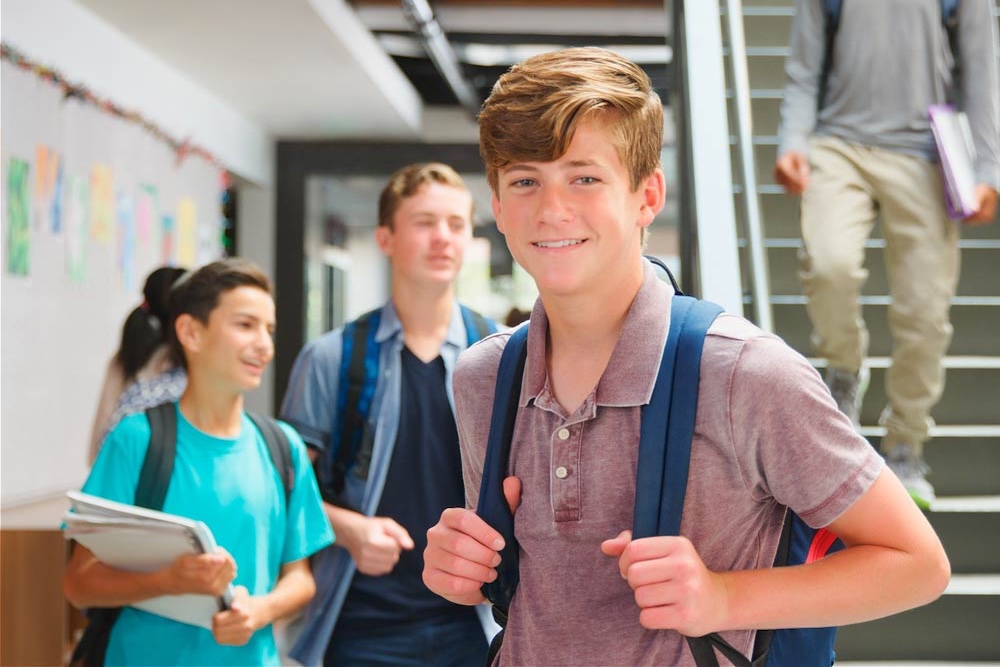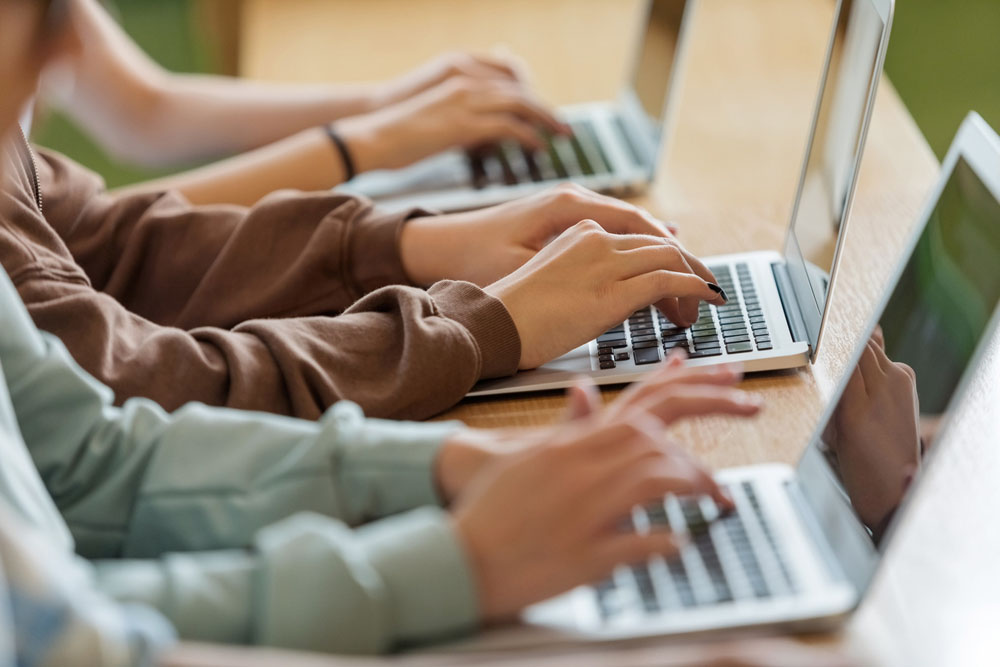Managing Impulsive Behaviours

Discover tips, treatment options, and support strategies from the Finding Focus Care Team

Last Update: August 18th, 2025, Estimated Read Time: 8 min
Why Impulsivity Matters
For teens living with Attention-Deficit/Hyperactivity Disorder (ADHD), impulsive behaviours often appear as blurting out answers in class, interrupting conversations, spending money without thinking, or engaging in risky activities. These behaviours are more than simple “bad choices”, they reflect how ADHD impacts the developing brain.
Impulsivity is not only disruptive but can also strain friendships, challenge family dynamics, and affect academic performance. For many teens, difficulty managing impulses can create a cycle of frustration and guilt that erodes self-esteem. Understanding the roots of impulsive behaviour and offering practical tools is the first step toward healthier self-regulation.
The Science Behind Impulsivity in ADHD
ADHD is associated with atypical development in the prefrontal cortex, which plays a key role in executive functions such as planning, inhibitory control, and decision-making. Research shows that when this part of the brain develops more slowly, teens may struggle to pause and consider consequences before acting (Shaw et al., 2014).
Barkley (1997) proposed that impulsivity is not just a symptom but a core deficit in behavioural inhibition, making it harder for individuals with ADHD to stop and reflect. This difficulty often leads to quick, unfiltered reactions that seem disproportionate to the situation.
Furthermore, emotional impulsivity, the tendency to react strongly and immediately to feelings like anger, excitement, or frustration, can overlap with behavioural impulsivity. Together, they shape much of the daily experience for teens with ADHD (Barkley & Murphy, 2010).
Common Expressions of Impulsive Behaviour
Impulsivity does not look the same for every teen. Some common expressions include:
- Interrupting and blurting: Speaking without waiting for others to finish.
- Risk-taking: Engaging in unsafe driving, experimenting with substances, or thrill-seeking.
- Difficulty delaying gratification: Struggling with saving money, waiting turns, or persisting with long-term goals.
- Angry outbursts: Snapping or yelling before thinking things through.
- Online impulsivity: Oversharing on social media or sending messages they later regret.
Recognizing these patterns helps caregivers and teens target strategies for support.
Why Teens Struggle More
Adolescence is a unique developmental stage. The brain’s reward system matures faster than its self-control mechanisms, making impulsive decisions especially tempting. When ADHD is added to this mix, the imbalance is even greater.
Studies confirm that adolescents with ADHD are more likely to experience impulsive decision-making compared to their peers, which can increase risks in areas like driving, peer relationships, and academic persistence (Sonuga-Barke & Halperin, 2010). This developmental gap is why support and structured strategies are so critical during the teenage years.
Practical Strategies for Teens
Managing impulsivity does not mean eliminating it altogether, it means building awareness, creating pause points, and offering safe outlets for energy. Here are evidence-based strategies that can help:
1. The Power of the Pause
Encouraging teens to practice a simple “pause and breathe” before responding can interrupt impulsive cycles. Even a three-second pause can reduce the likelihood of blurting or reacting angrily. Breathing techniques that engage the parasympathetic nervous system help settle racing thoughts and reduce stress.
2. Self-Monitoring and Journaling
Writing down situations that trigger impulsive reactions builds awareness. Journals or digital notes can help teens identify patterns, for example, “I snap at my sibling most when I’m hungry” or “I overspend online when I’m bored.” Recognizing triggers is the first step in prevention.
3. Delay and Distract
Cognitive-behavioural approaches encourage delaying responses by setting small rules: “I’ll count to five before speaking” or “I’ll wait one day before making an online purchase.” Distraction techniques, like walking away or engaging in a fidget tool, can provide enough time to reduce the emotional charge (Safren et al., 2005).
4. Reward Systems That Work
Because the ADHD brain is highly sensitive to immediate rewards, structured reinforcement systems can help. For instance, a teen might earn points for waiting their turn or completing tasks without interruptions. Rewards can be non-material, like extra screen time or choosing a family activity.
5. Healthy Outlets for Energy
Physical activity has been shown to improve executive functioning and reduce impulsivity (Halperin & Healey, 2011). Encouraging sports, walking, or even short movement breaks during study sessions gives teens constructive ways to manage restless energy.
Role of Parents and Caregivers
Supportive adults play a vital role in shaping how teens manage their impulses. Here are some caregiver-focused strategies:
- Model calm reactions: Teens often mirror the emotional regulation of adults. Responding with calmness, even when frustrated, sets a powerful example.
- Set clear expectations: Consistency in rules helps reduce impulsive choices. Instead of vague reminders, use specific guidelines: “Phones off at 9 PM” instead of “Don’t stay up too late.”
- Offer immediate, positive feedback: Recognize moments when your teen successfully controls an impulse: “I noticed you waited your turn before speaking, great job.”
- Collaborate on coping plans: Involve teens in developing their own strategies so they feel empowered, not controlled.
- Avoid harsh punishment: Consequences are most effective when delivered calmly and consistently, not in the heat of the moment.
When Extra Help is Needed
Sometimes, impulsivity becomes overwhelming and significantly impacts safety or well-being. Professional support may be necessary if:
- Risk-taking behaviours escalate (e.g., unsafe driving, substance use).
- School suspensions or conflicts increase.
- Emotional impulsivity leads to aggression or self-harm.
- The teen expresses distress over feeling “out of control.”
Evidence-based interventions such as Cognitive-Behavioural Therapy (CBT), ADHD coaching, and, in some cases, medication management have been shown to improve emotional and behavioural regulation (Safren et al., 2005; Barkley & Murphy, 2010).
Building Resilience Over Time
Managing impulsivity is not about perfection but about gradual improvement. Teens who learn to anticipate triggers, practice self-regulation strategies, and receive consistent support often see meaningful progress.
Encouraging a growth mindset, emphasizing effort over outcome, can help teens feel less discouraged when setbacks occur. With patience, persistence, and understanding, impulsive behaviours can shift from being overwhelming obstacles to manageable challenges.
Final Thoughts: From Impulse to Intention
Impulsivity may always be part of ADHD, but it does not need to define a teen’s life. By blending self-awareness, practical strategies, caregiver support, and professional guidance when needed, teens can learn to transform split-second reactions into more intentional choices.
Every pause, every deep breath, and every moment of reflection is a step toward greater self-control and confidence. The journey is ongoing, but each small success lays the foundation for long-term resilience.
Finding Focus Care Team
We are a group of nurse practitioners, continuous care specialists, creators, and writers, all committed to excellence in patient care and expertise in ADHD. We share content that illuminates aspects of ADHD and broader health care topics. Each article is medically verified and approved by the Finding Focus Care Team. You can contact us at Finding Focus Support if you have any questions!
References
Barkley, R. A. (1997). Behavioural inhibition, sustained attention, and executive functions: Constructing a unifying theory of ADHD. Psychological Bulletin, 121(1), 65–94. Link
Barkley, R. A., & Murphy, K. R. (2010). Impairment in occupational functioning and adult ADHD: The predictive utility of executive function (EF) ratings versus EF tests. Archives of Clinical Neuropsychology, 25(3), 157–173. Link
Safren, S. A., Sprich, S., Chulvick, S., & Otto, M. W. (2005). Cognitive-behavioural therapy for ADHD in medication-treated adults with continued symptoms. Behaviour Research and Therapy, 43(7), 831–842. Link
Sonuga-Barke, E. J., & Halperin, J. M. (2010). Developmental phenotypes and causal pathways in attention deficit/hyperactivity disorder: Potential targets for early intervention? Journal of Child Psychology and Psychiatry, 51(4), 368–389. Link
Halperin, J. M., & Healey, D. M. (2011). The influences of environmental enrichment, cognitive enhancement, and physical exercise on brain development: Can we alter the developmental course of ADHD? Neuroscience & Biobehavioural Reviews, 35(3), 621–634. Link





